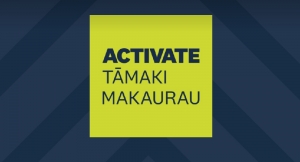Insolvency by the Numbers: NZ Insolvency Statistics April 2022
Economic recap
Another month with insolvency appointment figures on a downward trend while economic factors begin to squeeze businesses.
Those factors affecting the economy are little changed from prior month updates including;
Inflation
Increasing Costs of Living (now called a crisis)
Increasing Financing Costs
Falling House Prices and Sales Volumes across NZ
Supply Chain Issues (now increasing due to China zero Covid policies)
Increasing Wages
Low Unemployment Making Finding Staff Difficult
Tightening Margins
Looking at the Xero SME index graph, it shows April 2022 up by 20 points on previous months and on an upswing. However, it does not appear to be reflected in business confidence which has been falling as several of the economic factors, if not all, continue to affect their businesses.
Speaking to businesses and a reflection of the insolvency appointments we continue to see coming in, IRD remain restrained in their pursuit of delinquent debtors, shareholder disputes are making up a reasonable portion of appointments and staffing issues are what it causing concern rather than an inability to meet debts.
Company Insolvencies – Liquidations, Receiverships, and Voluntary Administrations
April 2022 appointment figures have successfully met the April 2020 appointment levels. This was previously our lowest April as it was immediately after and during the first set of lockdowns.
Solvent liquidations made up 37 of the 95 appointments, which is rather high and in line with the level of solvent liquidations seen at the end of the financial year. Shareholder liquidation appointments made up only 36 appointments for the month well below the 2021 monthly average of 61 shareholder appointments and the March figure of 90 shareholder liquidation appointments.
Notable Appointments:
Armstrong Downes Construction The first of the larger wellington construction outfits to hit financial trouble, the fallout from this may take a number of months the be felt by other businesses in the construction space.
Insolvency by Industry
“Construction & Property Development” hold on to their largest sector award for April 2022 with the remainder of the pie graph being a bit more shared out than past months. “Professional, Scientific and Technical Services made up a 13% share on the back of a number of solvent appointments in the month and were closely followed by “Food and Accommodation Services”, who frequent the top 3 industries.
Winding Up Applications
Winding up applications while not quite reaching 2021 April figures are a positive upwards track from the beginning of the year. As seen in the below graph IRD has begun processing applications. They remain below their average of 54% of total applications with making up only 40% in April it is still a move in the right direction to recover the large amounts owed to them from companies.
Of the winding up applications in 2021 that turned into liquidations and were not settled IRD saw 56% of their winding up applications go to liquidation. For the 2022c year to date only 42% of IRD’s winding up applications have ended up in liquidation. Both percentages remain below their 2021 levels and show room for improvement before IRD is back on top of the collections they are responsible for.
Personal Insolvencies – Bankruptcy, No Asset Procedure and Debt Repayment Orders.
While January 2022 was one of the lowest ever level for personal insolvencies April 2022 certainly gave it a good nudge trying to come in lower. The month saw only 28 Bankruptcies, 28 No Asset Procedures and 20 Debt Repayment Orders.
If you want to have a chat about any points raised or an issue you may have you can call on 0800 30 30 34 or email This email address is being protected from spambots. You need JavaScript enabled to view it.
Insolvency by the Numbers: NZ Insolvency Statistics March 2022
Economic recap
The March 2022 insolvency figures continue to be below past years. For the wider economy we saw inflation figures for the year to date at 6.9%. Slightly under what was expected from economists as a group but still well above the levels where they should be. The high inflation figures have led to an expected response from the Reserve Bank lifting Official Cash Rate (OCR) by 50 basis points in an effort to head off rising inflation.
From discussions with business owner on the coal face the cost of rising inflation, OCR raises, the rise in the minimum wage, increased sick days and introduction of new public holidays (Matariki) are a perfect storm of expenses that are unable to be absorbed by businesses. The owners are left with the option of price increases where possible or adjusting their business strategy and approach to deal with increasing costs.
Comparatively Xero has recently released their figures for SME’s with the SME index tracking up for the month of March 2022 and the debtor days dropping for collection all pointing to good signs for business. How this has been affected by the end of financial year tidy ups will be reflected in the upcoming April 2022 data.
As a country however we are heading into winter months after a 2nd lost summer of tourism, this will no doubt be tougher times for several industries. Along with China lockdowns causing further delays to shipping and supply lines. It is not yet clear sailing ahead for businesses in NZ. How reopened borders will play into this only time will tell.
Company Insolvencies – Liquidations, Receiverships, and Voluntary Administrations
March is one of the higher months for insolvency appointments being the end of the financial year, March 2022 unfortunately came in lower than all prior years. Not only were solvent appointments down but this was also reflected in IRD court liquidations with the full pressure seen prior to March 2020 yet to return to the vigour in which IRD has chased overdue debtors in the past.
Notable Appointments:
Auckland’s Poke Bars x3 Liquidated due to lockdowns and increasing cost of produce squeezing margins.
Insolvency by Industry
“Construction and Property Development” businesses continue to dominate their sector of appointments with “Financial and Insurance Services” (largely solvent appointments) and “Accommodation and Food Service” businesses making up 62% of total appointments for the month.
Winding Up Applications
By comparison winding up appointments for March 2022 were lower than the 2021 figures. Of note is that the drop is seen in the number of IRD winding up applications with non IRD applications only slightly down in the same period from 2021.
For the lower IRD applications is it likely that businesses are no longer racking up unpaid IRD debts? Have all the bad or dodgy operators suddenly changed their stripes and reformed their ways? This seems unlikely and it is more likely that the IRD is now sitting there with a growing list of delinquent debtors that they will have to do something about………eventually.
Personal Insolvencies – Bankruptcy, No Asset Procedure and Debt Repayment Orders.
While the total amount of personal insolvency appointment grows, they remain well below all prior March figures. The telling point for the year will be April where we see a dip in numbers or continued growth as we saw in 2019.
If you want to have a chat about any points raised or an issue you may have you can call on 0800 30 30 34 or email This email address is being protected from spambots. You need JavaScript enabled to view it..
Resurgence Support Payments and Wage Subsidy Post Receipt Review
With the availability of government subsidies becoming harder to obtain the Inland Revenue Department (IRD) and Ministry of Social Development (MSD) have begun the process of reviewing a business’ entitlement to the various covid subsidies they had received.
It was well publicised at the time that both the wage subsidy and resurgence support payment scheme were “high trust” models, with emphasis placed on getting the funds out to business’ in need quickly, rather than a proper review of the evidence upfront.
Initially the “audits” of the wage subsidy scheme by the MSD were more of a check box exercise, where they accepted verbal confirmations from business owners rather than conducting a proper review. This subsequently resulted in the Auditor General criticizing the MSD’s approach, leading to a tightening of the review procedures.
Prosecutions began from mid-2021, with recent decisions in early-2022 against individuals who took advantage of the wage subsidy scheme; conviction hearings have yet to be heard at the time of writing. Reviews by the IRD of the resurgence payment scheme, have picked up several business’ that should have paid back the wage subsidy, as they did not qualify for it. One company that was caught out chose to enter an insolvency procedure as they did not have the funds available to meet the repayment.
No doubt both the MSD and IRD investigations into businesses that received the support will be ongoing.
Our discussions with a number of accountants and businesses confirm the general consensus that the year ended 31 March 2021 and 2022 were good years provided you did not operate in the Hospitality, Tourism or Events industry. Given this general vibe it makes sense that further investigations should be undertaken by IRD and MSD. As of 22 February 2022, only $703 million had been repaid of the billions of dollars spent on the Government support schemes. There are likely substantial further recoveries to be made from business’ that were not entitled to them.
With any review, both MSD and IRD are focusing on 2 points. 1. Was the business entitled to apply for the schemes and 2. How were the funds spent upon receipt by the company.
The information they have sought to establish these two points is as set out below:
Six weeks bank statements, cash receipts and invoices prior to the Covid event
The documents requested will look at whether the business was entitled to apply for the scheme. When the schemes were commenced the business needed to have a trading history exceeding three months prior to the covid event, this was then changed to one month to allow new businesses to apply for the scheme and not be unfairly disadvantaged by the Governments actions.
Once it was established the business had traded for the minimum period through receipt of funds and invoicing history, they look to review the “six-week average/typical” revenue for the business in the pre covid event period. They check the amount claimed as the start was accurate and has not been inflated or artificially increased by funds earned outside of the six-week period. This pre covid event revenue figure is where the percentage drop is measured from. It is important that it is accurately measured and not inflated in any way. The review would also check that the funds received were from trading on the business and should be defined as revenue.
Further checks may also be performed on the invoices and customer base of the business, to ensure that the invoices are genuine. If longer than 30-day payment terms are in place with the business or to justify large cash sums that have been received and are outside the normal course of the business’ trading activities. This would include providing the contact and details of your customers.
Purchase invoices/receipts & bank statements
Next up is the look into how the funds received were spent.
If the business claimed the wage subsidy for an employee; did the funds go to the employee? PAYE records are easily used to establish the individual was an employee prior to the covid event. If the IRD’s MYIR records are insufficient, or they were a new hire than additional evidence by way of employment agreement or payment of wages by bank transfer and timesheets for the employee will be required. For owner operators, they will check that the owner has drawn a wage in the past, otherwise the steps undertaken when checking the business had been trading for 1 month above will be sufficient to prove this point.
If the business claimed the resurgence payments, checks will be performed to ensure the funds were not; simply paid to the owner, their related entities, or banked and not used. This will be through providing invoices and bank statements showing the funds were paid out and to whom.
Bank statements and income invoices for the period applied for.
Once it is established that the business was entitled to the funds and that they were spent appropriately, the next check is to look at the percentage drop in revenue experience by the business or if they were a group of companies, that of each who claimed the subsidy, the percentage drop across the group was greater than the required percentage drop to qualify for the scheme. Checks will be made to check that the decrease in revenues was not achieved through the intentions of the business and its directors to defer the revenue to a later period.
While the percentage of the drop is important, they will also look through the figures to review the reason behind it. With the later rounds of subsidies available any drop in revenues had to be the result of covid and the government's restrictions rather than a usual seasonal slowdown or the intention of the business owner to work reduced hours.
The above information IRD or MSD can request, it is comprehensive in what it covers and certainly within their powers under the terms and conditions signed up to when you applied and received the subsidies.
If you have further questions on the above content or find yourself in a situation where you have been caught out and need to pay back subsidies be sure to reach out to one of our Licenced Insolvency Practitioners or email us on This email address is being protected from spambots. You need JavaScript enabled to view it.
Insolvency by the Numbers: NZ Insolvency Statistics January 2022
Economic recap
With inflation figures for the final quarter of 2021 coming in at 6%, it was of no surprise that the OCR would be getting a lift from the Reserve Bank, the question was how much? Last month we mentioned the possibility of a 50-basis point lift with a few commentators backing this size lift. We ended up seeing a 25-point lift with the Reserve Bank using strong language that the next OCR review would likely see the rate lift 50 basis points.
The consensus seems to be that with the invasion of Ukraine, we will see inflation continue its upward trend for the year. Adding to the trend are the food cost increases and the possibility petrol prices will tip $3 per litre before too long. Depending on how high it goes is yet to be seen, there has been mention of inflation at 10% by the end of the year and petrol at $5per litre. While this may seem a long way to go from our current levels, we still have many months to go in 2022. No doubt our council rates review due out in March 2022 will show a lift in rates prices for all homeowners causing more inflation pressure.
Recent house sale volumes to date show a fall in sales for the January period, as pressures continue to mount on borrowers making financing more difficult to obtain. For SME’s business lending continues to remain difficult unless secured over a property but even that will come under pressure with the expectation of falling property values.
Cashflow should in our opinion be the business owners primary focus alongside a focus on the quality of any expenditure. For example review whether your cash outflows are paying core debts/trading obligations or being applied to payment default costs/interest. Is your business getting ahead or likely to. Are you favouring one party over others? You should not be without advice.
With increasing Omicron cases day by day, the peak is expected by the end of March; the government has introduced further business support. The comparison period is for the 6 weeks prior to 15 February which includes the Christmas period, a traditionally quieter period for businesses, meaning that this will be a difficult support payment for businesses to qualify for. At present Hospitality and Retail continue to struggle, as people treat the rising cases as reason to maintain a self-imposed lockdown and everyone now seems to know someone who has Omicron.
Company Insolvencies – Liquidations, Receiverships, and Voluntary Administrations
Corporate appointments for January 2022 are similar to figures from previous years. As expected, court appointments over this period are non-existent given the Christmas closedown for Solicitors and Courts.
66% of the liquidation appointments are made up by insolvent shareholder appointments, the remaining appointments are solvent shareholder appointments.
To date it looks like the February appointments will follow past year trends but whether they will reach the 2020 and earlier year levels, we will only know at the end February.
Insolvency by Industry
“Construction & Property” industry company appointments continue to make up the largest sector. These figures include both solvent and insolvent appointments. “Accommodation and Foods Services” have risen to 3rd following Financial and Insurance Services. These three sectors total over 50% of the total appointments for January 2022.
Personal Insolvencies – Bankruptcy, No Asset Procedure and Debt Repayment Orders.
Personal insolvency levels are at their lowest all-time levels since all 3 personal insolvency options became available to the public.
Of the of personal insolvencies figures, No Asset Procedures made up just under 50% of all insolvency procedures.
Winding Up Applications
Based off the numbers that were seen in December 2021, it is hard to not go up from here. As with any build back up, this will take time, in addition to the bulk of solicitors and professional services firms taking at least half of January off as happens every year with the Christmas closedown.
If you want to have a chat about any points raised or an issue you may have you can call on 0800 30 30 34 or email This email address is being protected from spambots. You need JavaScript enabled to view it..
Insolvency by the Numbers: NZ Insolvency Statistics December 2021
Yearly recap
It would be generous to say 2021 ended with a bang for appointments in the insolvency sector, it was more of a dull fizzle. Personal and corporate insolvency figures continued the downward trend, they have been following in the second half of the year. Winding up applications on the other hand, fell off a cliff, racking up 4 total applications for the whole country in the month of December. A considerable drop from the years high point of 83 in June.
With the bulk of the country moving to the Orange Alert Level in the final days of the year (excluding northland) and the Auckland border closure being lifted in the middle of the month, it was somewhat of a return to normalcy for people and businesses over the Christmas period. With the outbreak of the latest Covid variant ‘Omicron’, the government has returned the country to the Red Alert Level in January. The lesser restrained trading of the Orange Alert Level was too short lived for many businesses in the Entertainment and Hospitality industry. Whether we see a change to the Traffic Light System to allow for lockdowns and subsidies, that have already been called for by businesses, coming back only time will tell.
Supply shortages continue to affect businesses and force price rises. Included in this are the overseas issues of businesses having to temporarily close overseas once a worker comes down with Omicron. These pressures will continue to be felt during 2022. The end of the 4th quarter 2022 saw inflation figures for the year at 5.9%. This is well outside the target for the RBNZ of 1%-3% and will no doubt lead to further OCR rises in the coming years in an effort to control inflation.
From the property market point of view, all of the measures introduced over the year came to a head in December with the amended CCCFA coming into effect and the banks clamping down on lending. Critics have been vocal on the overkill approach the banks have been taking and people being locked out from future lending and the housing market. The government as requested an inquiry into if the legislation is being implemented as intended. CoreLogic’s latest data indicates monthly property price rises have pulled right back on the huge lifts seen in the last 18 months.
Company Insolvencies – Liquidations, Receiverships, and Voluntary Administrations
Of interest in the coming year will be how the lockdown closures we have seen in 2021 will play out. You only have to walk down the main street of many towns to see the number of ‘closed’ and ‘up for lease’ premises. These closures have yet to trickle through to insolvency figures. Directors have closed the doors and realised the assets leaving creditors out of pocket through their actions. The question is will the creditors apply enough pressure to tip the companies over or leave it to IRD? Once these businesses go into liquidation the only assets left are likely claims against the director/shareholder or related parties. They may have received a preference over other creditors by selling the assets and taking the funds.
The yearly totals are in with December continuing the slide that has taken place since June. The figures are the lowest in the last 4 years. Of the 83 appointments for the month 31% of those related to solvent liquidations. Court appointment made up 19 appointments which is standard in the December month, as the courts wind up coming into Christmas.
Yearly insolvency appointments see new low points when compared to the last 4 years with under 1,500 total appointments for the whole of 2021.
Insolvency by Industry
“Construction & Property” industry company appointments saw a drop on prior months down to 23 % but continue to make up the largest sector. These figures include both solvent and insolvent appointments. “Accommodation and Foods Services” have dropped to 5th equal likely in the hope that those businesses that continue to trade would benefit from the December peak in consumer spending and holidaying.
Personal Insolvencies – Bankruptcy, No Asset Procedure and Debt Repayment Orders.
The December figures saw the drop that is normally reserved for the January period. Not quite reaching the lowest point of the year bankruptcies made up 31% of the total, No Asset Procedures making up 51% and Debt Repayment Orders making up the difference.
Like most Christmas periods, personal insolvency figures tend to drop off over Christmas. Everyone overspends during this time only to get back from their holidays in late January, having the holidays to consider their options and work out that something has to change on the debt front. This often leads to a steady rise over February and March as people get their lives in order prior to the end of the financial year.
Total personal insolvency appointments for the year scrapped in just over 1,500 in total with the drop being largely in Bankruptcies and No Asset Procedures. Whereas Debt Repayment Orders maintained their 2020 levels.
Winding Up Applications
There were 4 winding up applications in December and none of them were from the IRD. It can’t go much lower than this so 2022 has a low benchmark to beat. While December is generally lower due to the Christmas close down for lawyers and the courts this one is hard to explain other than creditors negotiating with debtors or putting the legal proceedings off until 2022.
If you want to have a chat about any points raised or an issue you may have you can call on 0800 30 30 34 or email This email address is being protected from spambots. You need JavaScript enabled to view it..
Activate Tāmaki Makaurau – Business Advice and Implementation Grants
For many businesses in Auckland, it’s been a tough year. Navigating Level 4, Level 3, Level 3.1, Level 3.2, and Red have all had their own challenges and a move to Orange will have both rewards and challenges for businesses that have made it to this point.
The $60 million Government support package for Auckland businesses that was announced on 22 October 2021 is now open. There is $50 million available to fund advice and planning support for businesses and the implementation of that advice. A further $10 million is available for mental health and wellbeing support. In order to access this support, you will need to be registered with Activate Tāmaki Makaurau. This link will take you to the registration form: https://www.aucklandnz.com/activateauckland/activate-tamaki-makaurau-client
McDonald Vague is a registered service provider for Activate Tāmaki Makaurau in the following areas:
• Business Planning, Strategy and Continuity
• Financial Planning and Cashflow Management
• Business Hibernation or Exit
If you or your client think you would benefit from obtaining business advice from McDonald Vague in one or more of these areas, we are happy to work with you and/or your client to put together a bespoke business advice proposal that meets your client’s needs.
We have also developed two service offering under the Activate Tāmaki Makaurau business advice grant ($3,000 plus GST), which will be tailored to your client’s needs:
1. Crossroads
Undertaking a review of the business with the company’s owners, including reviewing the company’s cashflow and financial management, and undertaking a restructuring/turnaround assessment to determine whether the business should:
o Continue to trade – implement financial and cashflow management, business continuity planning, consider new opportunities and customer identification, operational improvements, and business coaching
o Restructure the business – implement financial and cashflow management, scale down/streamline operations, customer identification, and debt restructuring
o Wind down and close the business – implement liquidation planning and support
2. Road to Recovery
Undertaking a review of the business with the company’s owners, including a review of the company’s cashflow and financial management, and a restructuring assessment to determine what steps should be taken to:
o Reduce compliance costs
o Make operational improvements
o Improve financial and cashflow management
o Streamline operations
Once the business advice has been given and a plan for moving forward has been developed, the business can apply for an implementation grant ($4,000 plus GST), with which to fund the implementation of the business advice.
McDonald Vague has five licensed insolvency practitioners and we are able to provide liquidation services to businesses requiring these exit services as part of implementing their business plan and/or business advice.
If you want to know more, please email us on This email address is being protected from spambots. You need JavaScript enabled to view it. or call Marisa on 021 2424497.
More information on Activate Tāmaki Makaurau’s offerings can be found on its website: https://www.aucklandnz.com/activateauckland
Business Advice - Activate Tāmaki Makaurau support
Business Advice to Auckland based businesses
The Business Advice & Implementation Grants are now available for application. Auckland businesses can apply for up to $3000 + GST through Business Advice support. An Implementation Grant will pay for specific services to put your business advice or plan into action.
If you’re looking for expert advice and support in areas such as Continuity, Financial Planning, Business Hibernation, Compromises or Exit, we can help get you there. You can access advice if you are considering hibernating or closing your business, or are looking to restructure.
The advice should lead to a plan to overcome challenges and/or identify opportunities and map out the scope of the work required to achieve the plan.
Implementation Grant
You can also register for help to put your business plan or advice into action – either an existing business plan or a plan based on the Business Advice received through Activate Tāmaki Makaurau. The implementation grant is $4,000 + GST.
Eligibility to Access Business Advice and an Implementation grant
Your business needs to:
• be operating with 100 full time equivalent employees or less
• be GST registered in New Zealand
• have a New Zealand Business Number (NZBN)
• be operating in a commercial environment
• be a privately-owned business or are a Māori Trust or incorporation under the Te Ture Whenua Māori Act 1993 or similar organisation managing Māori assets under multiple ownership
• primarily operate within the Auckland Alert Level 3 boundary
• be an existing business that is trading prior to 22 October 2021
Register for Support
Businesses need to register for Activate Tāmaki Makaurau support. McDonald Vague have registered with Activate Tāmaki Makaurau.
Business Advice, register here
Implementation Grants, register here
Our Service Offering
A review of the business, including a review of the company’s cashflow and financial management, and a restructuring/turnaround assessment to determine whether the business should:
- Continue to trade – implement financial and cashflow management, business continuity planning, consider new opportunities and customer identification, operational improvements, and business coaching
- Restructure the business – implement financial and cashflow management, scale down/streamline operations, customer identification, and debt restructuring
- Wind down and close the business – implement liquidation planning and support
First Steps - Contact us on This email address is being protected from spambots. You need JavaScript enabled to view it. for further information and to assist with the application.
We’re here to help your business.
Insolvency by the Numbers: NZ Insolvency Statistics October 2021
Economic Rundown
As we pass the 100-day mark of Auckland’s lockdown businesses unable to trade at 100% capacity continue to struggle due to the alert level restrictions in place. The country was given the target of 90% fully vaccinated to move into the traffic light system, this has now been pulled forward for all regions from the start of December. The percentage of people vaccinated will have some influence at what traffic light setting the regions enter the new system at. For Auckland this can only mean a drop in restrictions as the highest vaccinated region however for some small regions with lower vaccinated levels they will likely see tighter restrictions in their region. Until then neighbouring regions phaze in and out of the various levels of lock down while covid continues to spread across the north island.
Insolvency figures continue at the low levels of the past few months. Business support remains in place from government subsidies. How this will transition to the new traffic light system is yet to be seen with the resurgence support payments previously available till the region returned to alert level 1.
Market constraints continue to affect the economy with unemployment continuing its downward trend to 3.4% for the September quarter, supply restrictions a constant concern and the cost of living is on the rise with inflation on the up. For homeowners interest rates are on the rise with the lift in the OCR projected to have a reasonably quick affect with a high level of borrowers fixed for 1 year or less. Shipping delays and high shipping costs continue to be an issue for businesses moving into the Christmas period.
Company Insolvencies – Liquidations, Receiverships, and Voluntary Administrations
Company insolvency appointments are sitting at 2020 levels for October 2021 and continue their downward trend. This is normal heading into Christmas with the lows of January ahead as most professional services take the month off. Of note are the high levels of solvent liquidations when compared to previous years at 30 for the month as shareholders continue to wind up solvent businesses and distribute the profits for use elsewhere. Receiverships saw a jump for the month up to 9 both company and personal receiverships up from the 4’s posted in the 2 prior months. As mentioned last month shareholder and creditor appointments both continue to drop.
Insolvency by Industry
“Construction & Property Development” and “Accommodation & Food” continue to make up just under half the total appointments at similar figures to those detailed last month. Retail have increased in number of appointments from 7% to 13% while the remainder of the categories play musical chairs in the low percentiles.
Personal Insolvencies – Bankruptcy, No Asset Procedure and Debt Repayment Orders.
October figures saw a slight bounce back from September lows but are still well below 2019 and 2020 personal insolvency levels. Time will tell how rising inflations will affect personal insolvency figures as the usual Christmas squeeze hits wallets and overspending goes on the credit card moving the problem into 2022.
Winding Up Applications
With the lower alert levels outside of Auckland in October the IRD has begun to take action against those businesses in arrears that are in these lower alert level regions.
If you want to have a chat about any points raised or an issue you may have you can DM me, call on 0800 30 30 34 or email This email address is being protected from spambots. You need JavaScript enabled to view it..
I am always available for a chat and am happy to help.
Keaton.
The Impact of Covid-19 Delta Outbreak on NZ Companies in Level 3
The Impact of Covid-19 Delta Outbreak on Companies under Level 3 restrictions
Many small and medium businesses are in serious strife, some hanging on by a thread. Businesses are seeking certainty about how and when they can get back to business.
A recent MYOB survey has revealed confidence among small and medium businesses is plummeting and states SME revenue has taken its biggest hit since the 2008 global financial crisis.
The drop in revenue and profits smashed from the current Covid-19 lockdowns, staff retention and skill shortages, the supply chain crisis, surging house prices, rising interest rates, closed borders, climbing inflation and general consumer confidence are all impacting business and will continue to have an impact for the foreseeable future.
The government announced a comprehensive package which is a health-based approach on 22 October. This has provided some clarity and certainty and some financial relief. Increases in the resurgence package and wage subsidy scheme are welcomed though may be too late for some?
The government has confirmed more help for employers in the shortterm and a transition grant in the new framework to boost the “gear up” as businesses reopen in a traffic light framework. In the green framework, support payments will end. We expect to see a rise in insolvency appointments soon after.
Tourism/Accommodation Sector
The traffic light system may open the country up domestically but there is lack of clarity on when borders will reopen impacting the viability of many NZ businesses particularly in the accommodation and tourism sector.
The NZ Herald reported on 21 October that Auckland tourism employers were worried senseless as the Auckland lockdown would stretch close to three months. The article quotes a tourism provider ''In the tourism sector confidence is at an all time low. Businesses are reporting they're not even getting inquiries, let alone bookings, for the months ahead.''
The heat on companies particularly in the retail/travel/tourism/hospitality/aviation sectors is not currently being seen with a rise in companies facing liquidation. Instead many companies have closed waiting to reopen (but now may be revisiting that view?), some have ceased to trade, paid creditors and exited altogether. Many companies are holding out relying on business resurgence, the bank guarantee scheme and wage subsidies to keep their staff employed. It is unknown whether they will be as resilient as they were in 2020 and whether they will bounce back.
Debt Collection Actions
We are noticing increased attention from IRD for companies in Level 2 regions. It is recommended for any business struggling to meet tax arrears that negotiations are entered into now to avoid a potential winding up proceeding. They IRD are open to negotiation early on. Company directors that bury their heads in the sand and have no plans in place may face less leniency and liquidation proceedings in the future. There is a steady climb in IRD initiated appointments since 1 October 2021.
If you are facing a statutory demand gain some advice early. Ignoring a statutory demand will likely lead to the service of a winding up proceeding.
What should you be considering now?
- Consider the risks of trading insolvently and how directors can be held personally liable. For example, be careful to read the terms for applying for continued subsidies and resurgence.
- Negotiate an instalment plan with IRD for historic arrears and have a plan in place. The Inland Revenue have pressure to maximise the recovery for the Commissioner under the Tax Administration Act. They are willing to work with companies that communicate early on and this can save further interest/penalties.
- Assess the viability of the business and its future. What is the position when wages subsidies end? Prepare a cashflow forecast.
- Where cashflow is an issue, consider compromises with creditors leading to some debt forgiveness and time payment arrangements or voluntary administration.
- If the company has lost too much from the impact of Covid19 and the prospects are that the company has minimal ability to repay creditors nor has a financial source to fall back on to offer a better position than what liquidation holds, then liquidation sooner may be the better option. Continuing to trade with knowledge of insolvency is a risk for the directors.
We are here to help
Our team are happy to discuss the options available for struggling companies and how to manage personal guarantees and personal exposure. Contact This email address is being protected from spambots. You need JavaScript enabled to view it.
If your company needs some advice on the restructuring options or is likely facing the prospect of liquidation, we are happy to advise on the process and consequences.
We can also provide some advice on the options from The Regional Business Network, who may be able to assist with the funding of specific advice relating to business continuity and restructuring.
Insolvency by the Numbers: NZ Insolvency Statistics September 2021
Economic Rundown
Pressure and frustration continues to build for business owners and the wider economy; due to the lack of transparency, a proper plan in place as to when we may once again open up the country and what needs to be achieved to have these lockdown restrictions lifted.
We have now had our first full calendar month with Auckland and the surrounding regions at Alert Levels 3 & 4; while the rest of the country remains at Alert Level 2. The lockdown effects are being felt across the country, both financially and emotionally.
As we saw with the first round of lockdowns in 2020, lockdowns have a negative effect on insolvency figures, which have once again taken a sudden drop. Historically, we see a seasonal slowdown in insolvency figures over the Christmas period, so numbers may not see a recovery till 2022.
The factors affecting the NZ economy continue:
- Shipping delays and cost increases both international and domestic
- Supply shortages across several industries
- High consumer demand for goods
- Labour shortages
- Inflation higher than RBNZ’s targets leading to a lift in the OCR of 25 base points
- Continued quantitative easing and spending by governments propping up the economy
The August 2021 lockdown has introduced some additional uncertainty into the economy:
- Restrictions/Rules at each lockdown level continue to change from prior lockdowns
- Business’ that could previously open and trade at breakeven at level 2 have lost this option due to increased patronage restrictions of indoor spaces (hospitality, arts, tourism, venues)
- Central government support has been more targeted compared to previous lockdowns
Inflation figures released on 18 October 2021 for the quarter ended September show inflation of 2.2% in the quarter, putting yearly inflation at 4.9% driven largely by government spending and money printing. This will no doubt flow through into future OCR rises in attempts to curb the rise.
A quick side note we are seeing with October appointments is that IRD are now starting to apply pressure in those regions at level 2. Be sure to check back in for next months article for full details.
Company Insolvencies – Liquidations, Receiverships, and Voluntary Administrations
There has been a continued drop in appointments, as compared to the rest of 2021 and earlier years. Except for solvent liquidations when looking at the type of appointment, there is a drop. This is likely due to shareholders wanting to clear up their affairs in the lull created by lockdowns and the need to extract cash from the now dormant companies to meet other financial shortages. Traditionally, we see solvent liquidations peak in March, making up 20% of appointments in 2021. In September, solvent liquidations make up 25% of appointments.
With the Level 3 & 4 lockdown over parts of the North Island, the drop in appointments has not quite reached the lows seen following the late March 2020 full country lockdown. When September 2021 is compared with past year highs and averages, the drop off in appointments is noticeable.
Notable insolvency appointments in September:
- Allpress Expresso – The company has undergone a solvent liquidation following the sale of its business.
- Tai Ping Asian Supermarket (Beach Road)– Liquidators; then Receivers were appointed due to decreased patronage from overseas students.
- Cash Converters Onehunga; traded as an Onehunga based pawn broker. The Limited Partnership and Limited company have both been placed into liquidation by their shareholders.
- Ormiston Rise – The company was involved in the governments Kiwibuild projects, was placed into liquidation following its entry into Administration and Receivership earlier in the year.
Due to popular demand, I have taken the figures a step further and broken the appointment figures down by industry. Business operating in the construction industry and property development are currently making up 37% of total appointments. I expect to see Hospitality and Retail gaining a larger chunk of the pie in the coming months if the lockdown restrictions are not eased.
Personal Insolvencies – Bankruptcy, No Asset Procedure and Debt Repayment Orders.
The number of personal insolvencies has seen a drop to its lowest levels since pre 2018, with No Asset Procedures at an all time low. The plateau seen from April 2021 onwards, has now dropped off.
A common discussion I’ve had with colleagues, business owners and friends is around how insolvency figures can continue to track downwards when the country remains in lockdown, while business’ and individuals struggle to make ends meet. At this stage, it’s a wait and see approach for the future; coupled with guess’ as to how inflation will affect the economy and whether wages will track upwards to keep pace with it.
Winding Up Applications
The drop in Winding Up Applications, seen in the second half of August, has continued into September. The IRD have pulled back on enforcement action and provided business’ extra time and leniency to deal with arrears, while the country remains in lockdown. There has however been an increase in IRD activity in Level 2 locations.
We expect that this approach will continue from IRD until such time as the country is back at level 1, or until instructed otherwise by the government.
In addition to IRD stepping back their enforcement action, difficulities around serving documents on business’, court delays and the “be kind” mentality, have seen winding up applications continue to track down. As mentioned this will have a continued downward affect on creditor appointments in the coming months. Less winding up applications now, mean less liquidation appointments in the following months.
The below graph details how the numbers of advertised winding up applications, actually resulted in liquidation. While IRD was the only applicant with liquidations in September 2021, this is likely due to their need to chase every debt to the finale; they rarely write off unpaid debts.
If you want to have a chat about any points raised or an issue you may have you can DM me, call on 0800 30 30 34 or email This email address is being protected from spambots. You need JavaScript enabled to view it..
I am always available for a chat and am happy to help.










